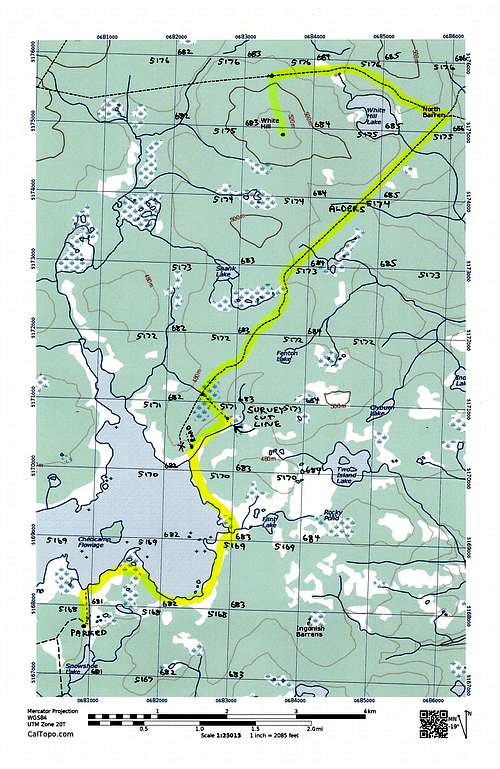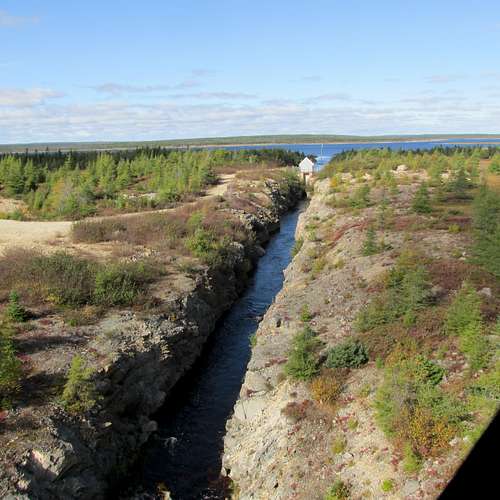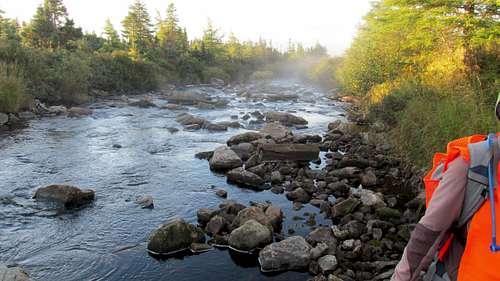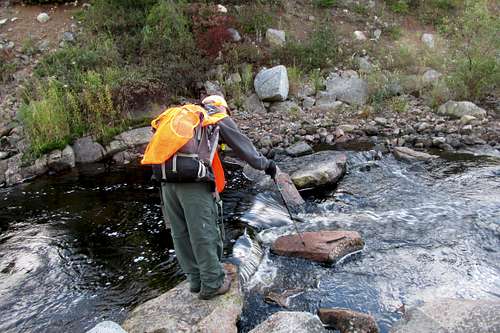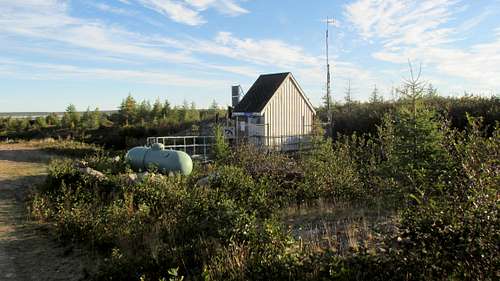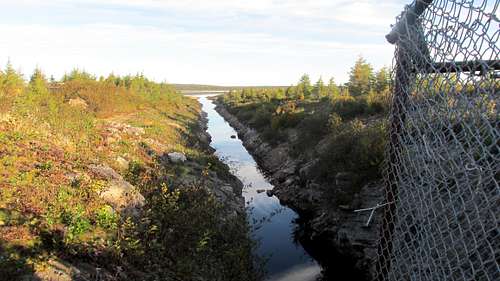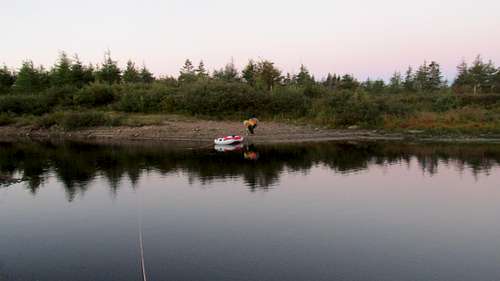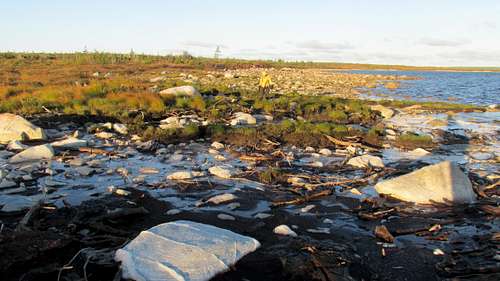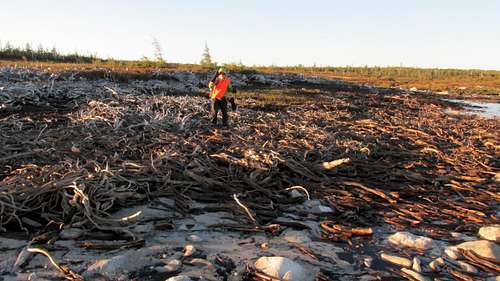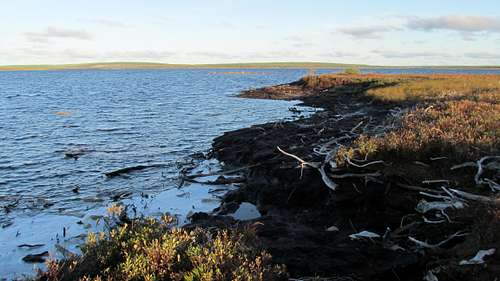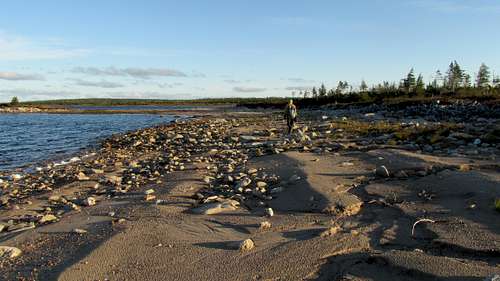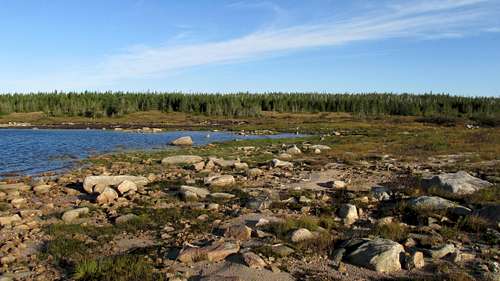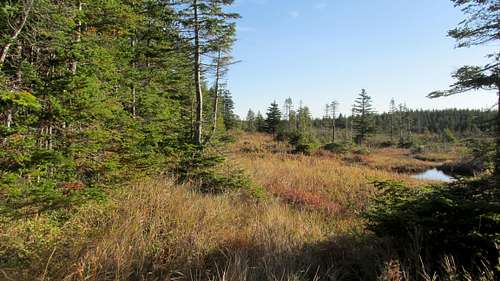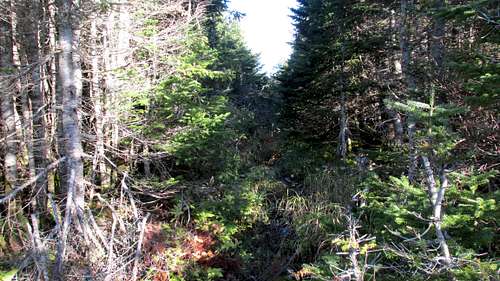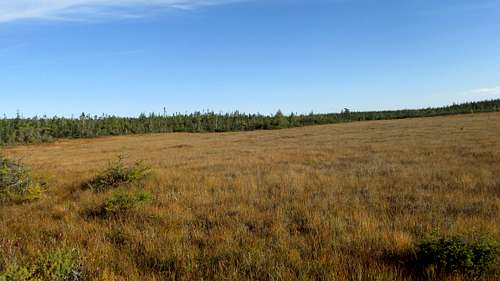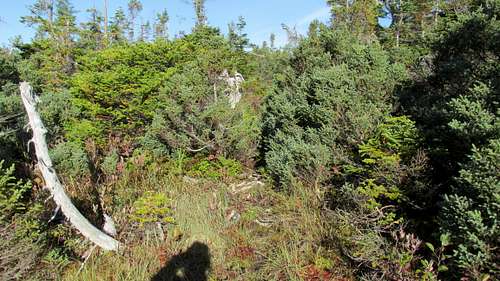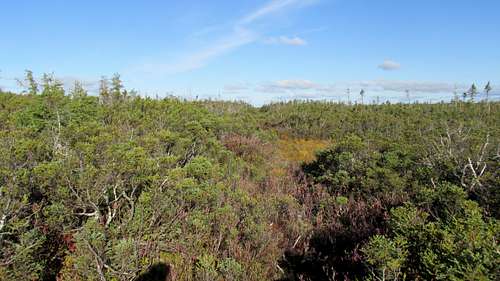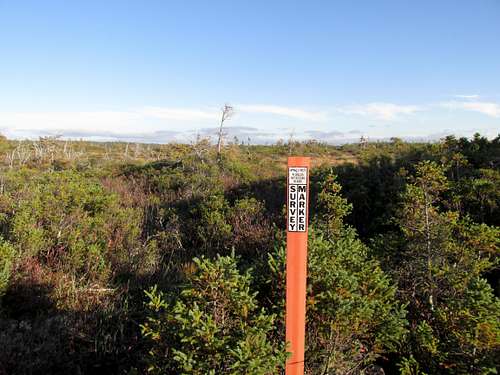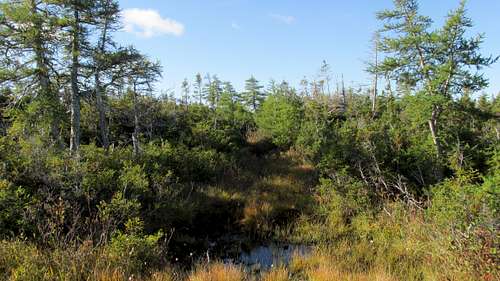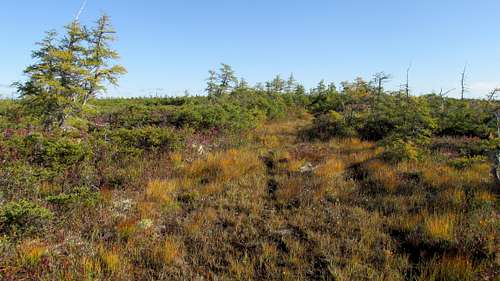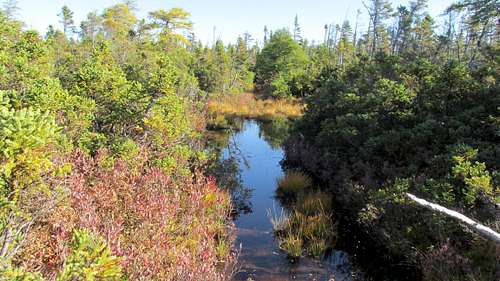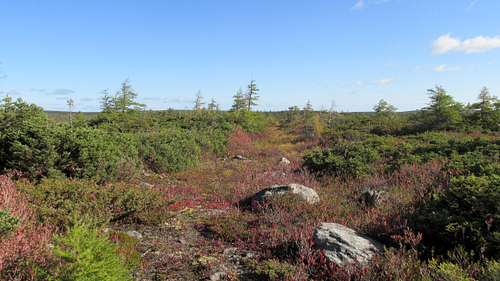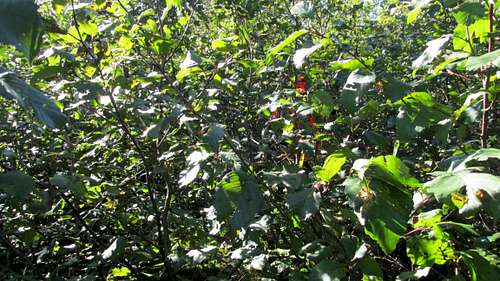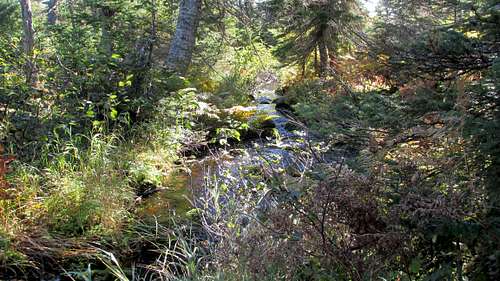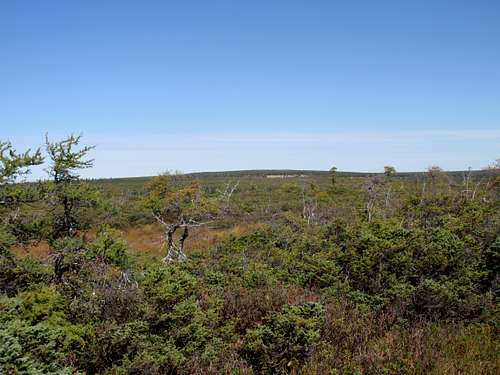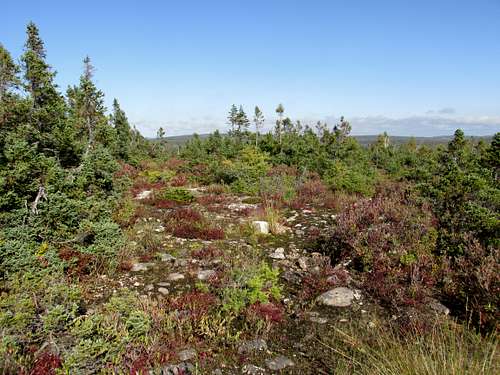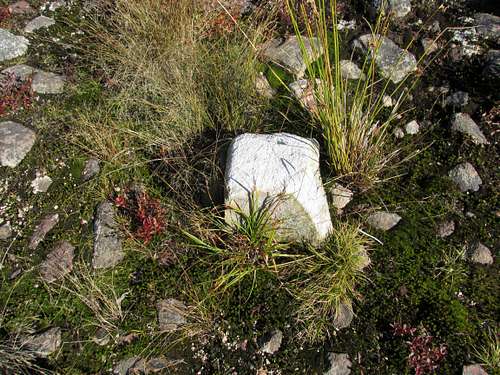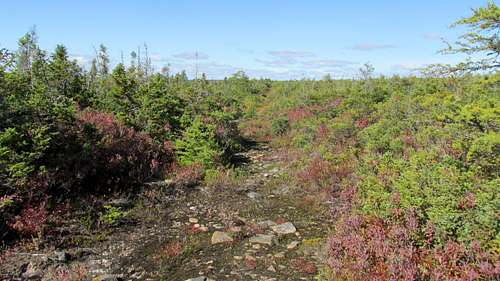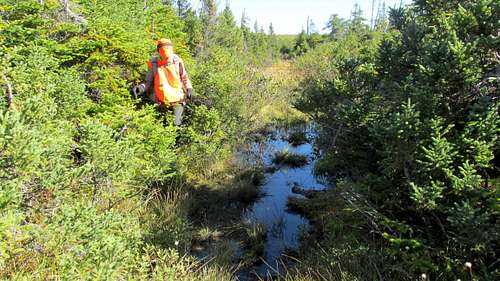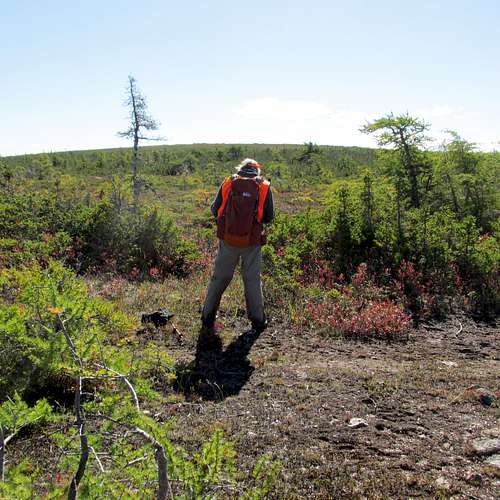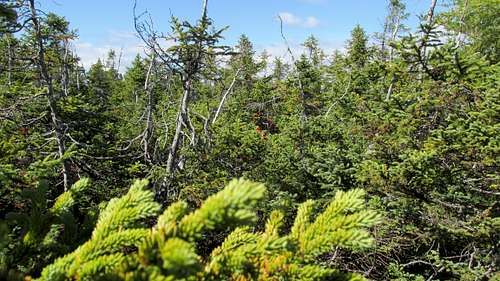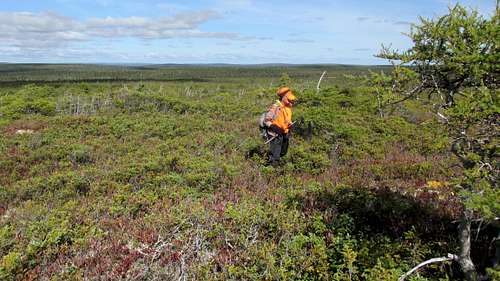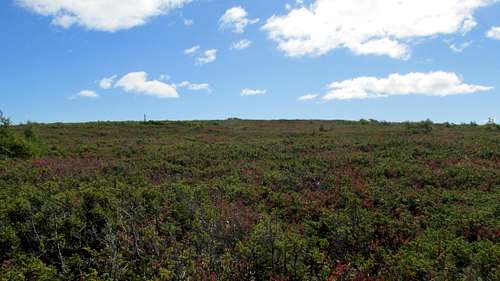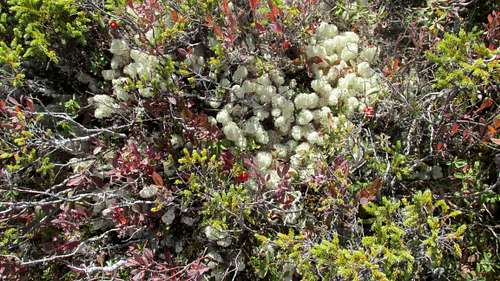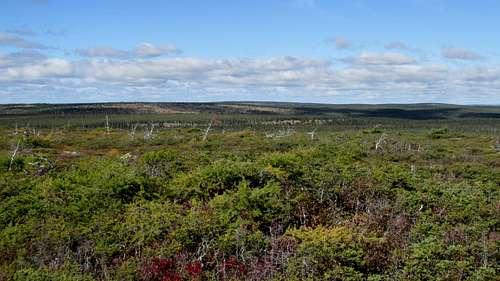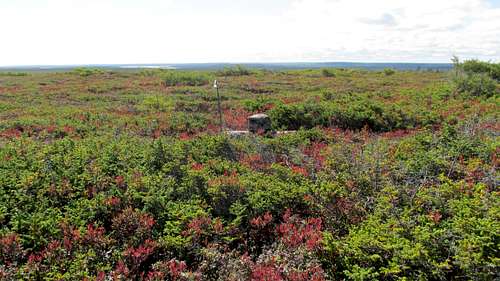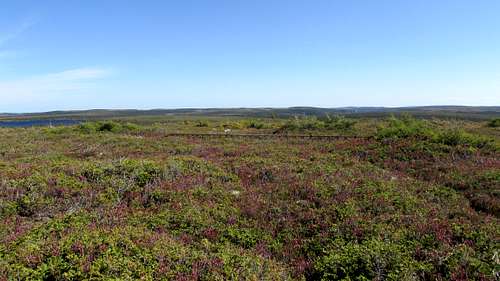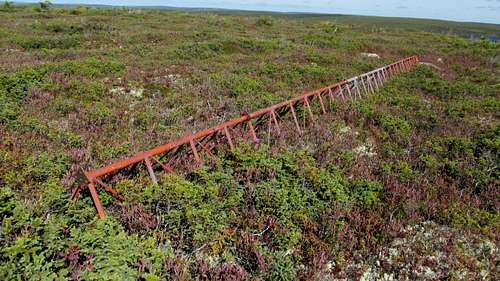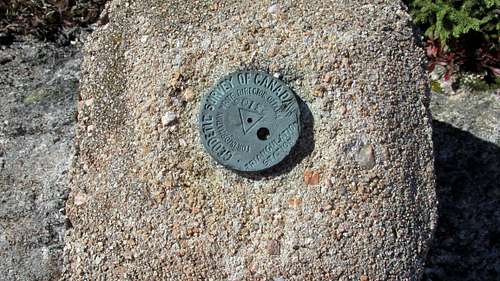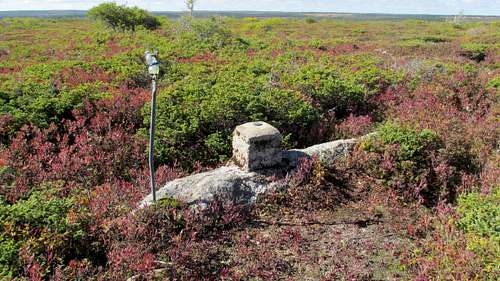-
 5549 Hits
5549 Hits
-
 72.08% Score
72.08% Score
-
 2 Votes
2 Votes
|
|
Route |
|---|---|
|
|
46.70255°N / 60.59859°W |
|
|
Hiking |
|
|
Fall |
|
|
A long day |
|
|
Overview - White Hill - High Point of Nova Scotia - Cheticamp Flowage Approach
The Cheticamp Flowage approach to White Hill is the shortest route. It’s the only route I have personal experience with, so I’m unable to compare the various challenges to the other longer approaches. None of this route is on currently maintained trail. Most of the distance is on old overgrowing roads. If it weren’t for the moose, these trails would be reclaimed by the vegetation at a faster rate.Getting There
The trailhead is on the south side of Cheticamp Flowage and the west side of the outlet canal that flows to Snowshoe Lake. We parked in a clearing where the access road meets the minor road that goes along the edge of this drainage. See the parent page for directions to this trailhead.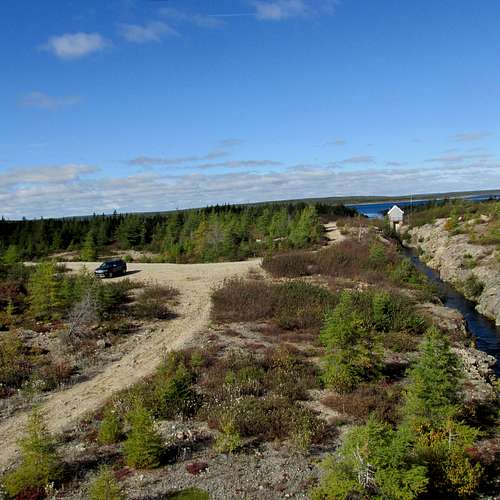
We parked in a clearing where the access road meets the minor road that goes along the edge of the canal.
Route Description
The first obstacle is to get across this outlet canal. One option is to travel downstream (south) to where it is more of a stream than a canal.
Then depending on water flow and your tolerance for rock crossings you might find a place to cross without getting your feet wet.
On our first trip in 2015 we lost time by trying this first and not liking the look of some committing long steps we’d have to make.
Another option is to cross at the water control station. That is officially not allowed. There are No Trespassing signs and a tall fence. In 2015 the fence showed signs of several people having climbed it. The wire on the top was pushed around to make it more passable. In 2016 this damage to the fence had been repaired.
That brings us to the option we went with in 2016. Crossing the canal by boat. At the north end of the canal, near where it meets the lake, the canal widens. More importantly it now has a normal shoreline instead of the steep rock wall sides of the canal.
This is where we launched our inflatable boat. For about $30 at Canadian Tire my brother found this boat on sale and had it waiting for us at my sister’s place.
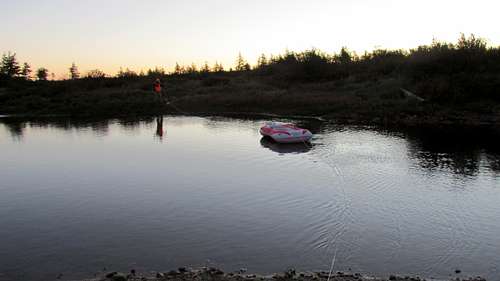
Pulling the boat back. After first paddling across, we used rope to return the boat for MountainHikerette.
Since this boat was basically a small water toy we choose to cross separately. I rowed across first. Then MountainHikerette pulled the boat back by one of the attached lines. I then pulled her across. Disclaimer: I make no representation of any Canadian boating regulations. Research for yourself what regulations might apply to any craft you arrive with.
A big reason to go with the boat is it puts you in a much better place on the other side. After crossing and stashing the boat we were next to the shoreline of Cheticamp Flowage. The other options require additional time-consuming bush whacking and swamp slogging to get to the shoreline.
On the south shore of Cheticamp Flowage follow the shoreline around to the northeast side. Here you leave the lake shore and work your way to an old overgrown road that heads to North Barren. Since Cheticamp Flowage is a lake controlled by a dam I can’t guarantee what the water level will be for you. It was basically the same for us on our two trips in October of 2015 & 2016.
Most of the lake shore was easier going for us than the swamp infested overgrown land. Calibrate your eyes for spotting the firm versus the soft. Some stretches are over some large rocks. Since you’re reading this on summitpost you’ll probably find those easy to deal with.
We found when there was a point of land the shoreline tended to narrow and get muddy. So it was best to cross the point and practice your swamp skirting skills. Another interesting place had a bunch of driftwood to cross. Not a big deal, just be careful with your footing. There are a couple stream crossings. Just look around and find where it makes sense to step across.
At what could be called the northeast corner of the lake, you leave the shore and head inland. There are a couple choices on route.
The NTS topo map shows the old road coming out almost to the shoreline. Beware. The map is off. To find the old road, you need to follow the drainage clearing inland over a couple hundred meters. The road is apparent from the clearing if you find it. I can’t testify on the condition of this part of the route since we traveled a different route.
Follow the drainage clearing farther inland to a survey cut line. We followed the drainage along the left side (going upstream) staying mostly at the edge of the trees. We were forced away from the trees on occasion to go around ponds, but returned to the forest edge to avoid getting swamp stranded.
The survey cut line doesn’t exactly jump out at you, but it is apparent when you look at it. Use my coordinates to be able to look at the right place.
Like the old road, the cut line is also overgrown, but since it goes over a small hill, the ground is mostly solid. This survey cut line seems to correspond to the park boundary and was perhaps cut more recently than the road.
Although the footing is solid the survey cut line is your introduction to smashing through overgrown foliage. The opinion of the Dept of Natural Resources is vegetation is to be left in its natural state. As far as they are concerned the wild can reclaim these trails. I guarantee you won’t have near as charitable opinion of the plant life during your hike.
Follow the survey cut line northwest until you intersect the old road. The road itself won’t jump out at you, but watch for it when you get to a bit of a clearing.
The simple instruction is to follow this old overgrown road northeast (turn right) until you come to the intersection at North Barren. The pictures show the reality. There are some good stretches,where the footing is solid and the trees and bushes haven’t been as enthusiastic with reclaiming their birthright.
But water is a constant reality. Several stretches of road are underneath water just deep enough you don’t want to walk in it. That means hanging onto bushes while trying to walk of the sides of these ponds. Sometimes the bushes have enough gaps for you to skirt away from the road and come back. Often leaving the road means encountering barriers of intertwined bushes that force retreat. And there are a few stream crossings that might mean looking for the best long step across. And sometimes the footing is soft enough to force quick walking so avoid sinking in the mush.
Through all of this the road can be followed, that is until you encounter the alders. I labeled the map for where you’ll encounter the alders. The alders obliterate the road completely. I’m sure if this route were followed a lot, someone would find a way around the alders, mark it, and then a new path could develop. But that’s not the case. You’ll have no choice but force your way through a few hundred meters of alders until they relent, and then find the road again. Mark a waypoint before pushing into the alders, and use your GPS & compass to find your way back to the track of the road. The waypoint I provide is for the north side of the alders. I recommend storing that waypoint as a backup in case you have trouble re-finding the road.
There are a couple streams crossings. Those are generally not an issue compared to all the other places where the road is under water with bushes blocking easy skirting.
The intersection at North Barren has a small stone marker. Here turn left to head generally west to the north side of White Hill.
Be careful of some game trails that veer left down towards White Hill Lake. But if you resist following those, and keep your eyes peeled, you should be able to follow the road as it passes north of the lake.
The map shows a drainage flowing south towards the northwest corner of the lake. It was in this vicinity we encountered the most obnoxious water hazard of the day. The bushes on each side formed a virtually solid barrier. The sides of the water hole disappeared under the bushes in critical places. After several foiled attempts we managed to smash, grab and swear our way to where we could finally get across. Expect to get scratched, bruised, muddied, have clothing tears and plant parts embedded in your paraphernalia.
Crossing this obstacle was a physiological victory. Looking at the map, I was optimistic we were leaving the worst of the soggy crap behind. Where the bushes were lower we could see White Hill rising to the left. It was just a matter of following the road until we reached the most efficient place to head cross-country. I also had hope the higher ground would be drier and not as choked with trees and bushes.
As the road passes north of White Hill start watching for a break in the bushes. Also, for efficiency and staying above wetness let the road gain as much elevation as it’s going to.
I recommend using some flagging to help with your return. Be sure to clean the flagging on the way out. We found a clearing and went for it. Unfortunately it didn’t take long to encounter a thick stand of trees and bushes. We made use of what gaps we could, but the gaps closed and we just had to force our way through. Plan on more bruises and scratches! After maybe a couple hundred meters of thick bush we broke through to the other side.
After this barrier is just a matter of navigating through the lower bushes the rest of the way to the summit.
Keep going uphill in a generally southern direction and you’ll get there.
You’ll notice a few different types of ground cover. Low but thick bushes best skirted, low but easy to push-through bushes and soft lichen patches. Any of these feature holes. I fell down multiple times from stepping in holes on this last stretch to the summit.
The summit is a broad area. Keep your eyes peeled for a long narrow rock that sticks up from the bushes. The rock features a survey monument mounted on top, and at one end a metal pole sticking up chest high. Somebody tie-wrapped a plastic drink bottle to the top of the metal pole.
Near the summit to the east is an antenna tower lying on its side.
Keep in mind that unlike a mountain, the return journey will likely take as long as the way in.
GPS Waypoints WGS 84 UTM Zone 20 Latitude Band T Elevations in Metres
680952 5167722 475 Parking
680985 5168154 463 Cross canal in boat
682327 5170134 460 Leaving lake shore
682399 5170326 473 The start of the road near the lake
682899 5170781 477 Survey cut line meets drainage
682577 5171103 483 Intersection of survey cut line& road
684724 5174020 472 Alders
685932 5175306 475 Intersection of roads at NorthBarren
683396 5175804 491 Leave Road
683577 5174911 526 White Hill summit
Essential Gear
A small boat is recommended. Strong navigation skills with map, compass & GPS. You probably won't see anyone else all day so a Satellite SOS like a SPOT. Sturdy hiking boots that can take getting wet & muddy. A headlamp! Be sure to file your hiking plan with the National Park.External Links
CalTopo: https://caltopo.com/map.html#ll=46.6759,-60.60171&z=13&b=t&o=r&n=0.25Cape Breton Highlands National Park: http://www.pc.gc.ca/eng/pn-np/ns/cbreton/index.aspx


